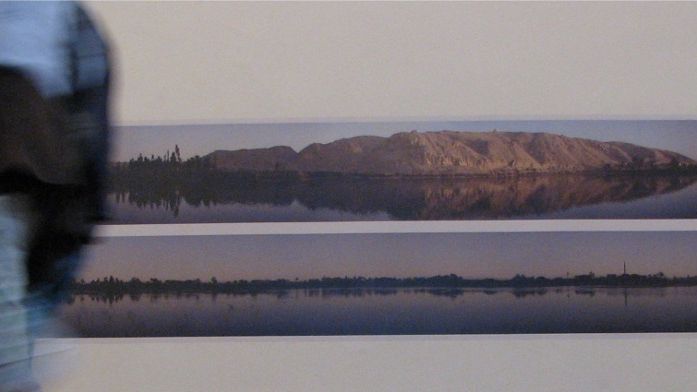Nile Studies
Experimental photography and cartography (2006)


With its 6.671 Kilometers, the Nile is widely accepted as the longest river on Earth and has often been referred to as the most beautiful and most famous river of the world. In the 'Nile Studies', this river is the object of an unique photographic mapping and investigation project
The Nile is a singular river in several respects and has intrigued historians, artists, poets since the ancient days of the Pharaohs. Called 'iteru', meaning Great River in Ancient Egyptian, it has been primary lifeline and spiritual, cultural and economic source for the Egyptian Civilization for more than 3000 years. One cannot think about Egypt without the Nile. But - carrying down the water from the deep African highlands down to Egypt - the Nile is also unusual for its last major tributary which is joining it roughly about halfway to the sea. From that point on the Northern section of the river flows almost entirely through desert, the Nile actually diminishes due to evaporation and irrigation on its way down to the Mediterranean Sea.
Its crucial role as a lifeline of Egypt since beginning of civilization justifies to argue that "no international river basin has a longer and more complex and eventful history of water politics than the Nile." Today "It plays an essential economic, political and cultural role in the 10 countries through which it flows" and the importance of the Nile is a great as ever.
Nile Studies is an artistic research and investigation project, an experimental photographic and cultural mapping survey by digitally (slit)scanning Nile's long coastlines and landscapes along with its long and complicated history and politics.
see also:
The Danube Panorama Project (rev.) (2022)
River Studies (2005-2017)
The Danube Panorama Project (2006)